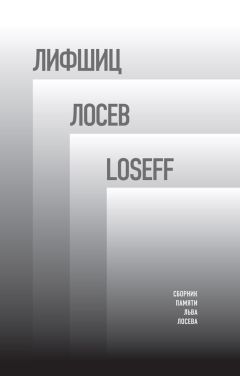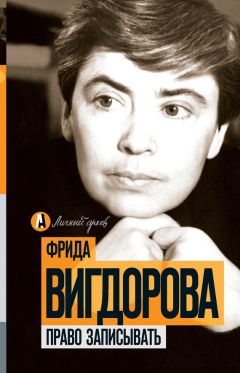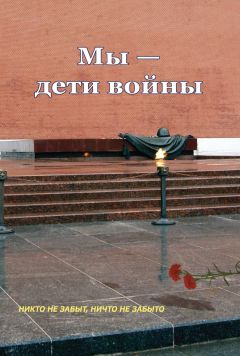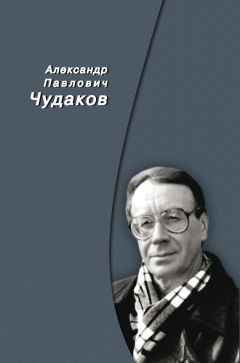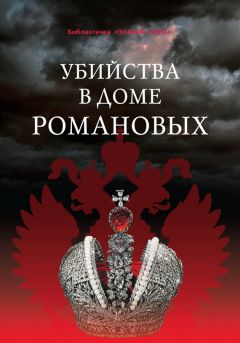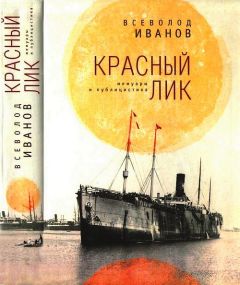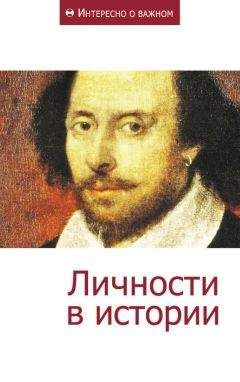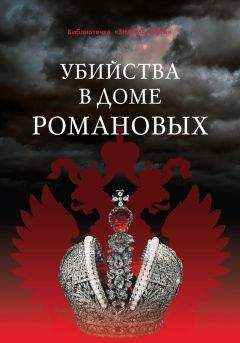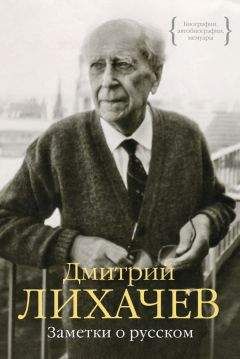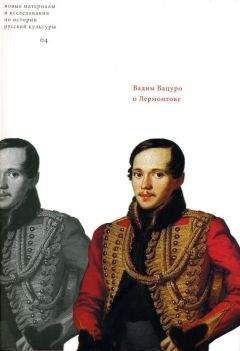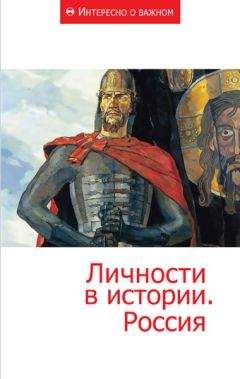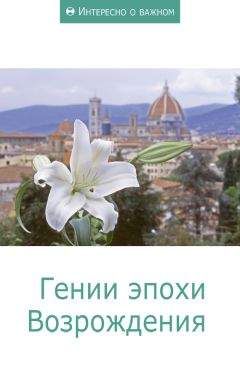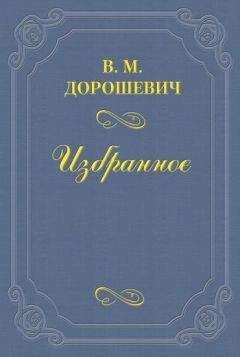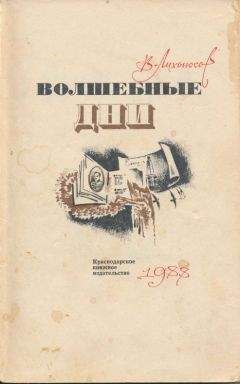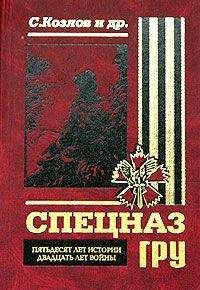Сборник статей - Россия и США: познавая друг друга. Сборник памяти академика Александра Александровича Фурсенко / Russia and the United States: perceiving each other. In Memory of the Academician Alexander A. Fursenko / Russia and the United States: perc

Все авторские права соблюдены. Напишите нам, если Вы не согласны.
Описание книги "Россия и США: познавая друг друга. Сборник памяти академика Александра Александровича Фурсенко / Russia and the United States: perceiving each other. In Memory of the Academician Alexander A. Fursenko / Russia and the United States: perceiving each o..."
Описание и краткое содержание "Россия и США: познавая друг друга. Сборник памяти академика Александра Александровича Фурсенко / Russia and the United States: perceiving each other. In Memory of the Academician Alexander A. Fursenko / Russia and the United States: perceiving each o..." читать бесплатно онлайн.
Этот сборник статей и материалов посвящен памяти выдающегося российского историка Александра Александровича Фурсенко (1927–2008). Его тематика определяется основными научными направлениями, разработкой которых занимался он сам. Сборник открывается мемориальным разделом, в котором публикуется несколько очерков, посвященных различным эпизодам насыщенной событиями жизни А. А. Фурсенко. Основной объем сборника занимают три тематических раздела, в которых сгруппированы статьи российских американистов по различным проблемам истории США, статьи американских русистов по истории России и статьи по истории русско-американских отношений, написанные как отечественными, так и зарубежными историками. Большой интерес представляют также впервые публикуемые здесь документы, принадлежащие перу А. А. Фурсенко. Это и личные письма, повествующие об обстоятельствах, при которых он впервые оказался в частном архиве семейства Рокфеллеров, и официальный отчет о его пребывании в США двадцать лет спустя.
While all of this legal and extra-legal hostility toward Kiev’s Jews surely helped to draw them together against a common and seemingly ubiquitous enemy, it also created a tension between close community ties and the urge to acculturate or assimilate to Christian, Russian culture and society. To be sure, far from all Jews had the inclination or opportunity to adopt Russian ways, let alone assimilate or convert to Orthodoxy. Yet the bustle and opportunity for Jews in Kiev, indeed, the very closeness of urban relations, did encourage and maintain a steady, growing movement toward acculturation. The very prominence of Jews in trade to and from the city and the limits placed on Jewish residence made for much coming and going, meaning that community for many was a fleeting experience. Finally, the great wealth gap among Jews further divided the community in ways that the philanthropic nurturance of the needy by the wealthy elite could not completely offset. Wealthy Jews lived in different, more exclusive parts of the city from poor traders and workers. They insured cordial relations with state authority and their social ascendance among ordinary Jews by arranging the reelection of the same Crown Rabbi, who for over three decades protected the interests and provided religious legitimacy to the acculturated elite. For these several reasons, it would seem that the only reason to raise the question of community among Kiev’s Jews would be to note the anomaly that there was a community at all. Yet Kiev’s “Jewish Metropolis” functioned as a community of necessity that shielded Jews from a hostile and bigoted environment and that condition also engendered stronger and more meaningful common bonds.
Faith Hillis’s recent study of Kiev and Right-Bank Ukraine does not attribute any greater community cohesion to Kiev’s Jews, but it does place them within the larger political and economic framework of a city that was both more cosmopolitan and more bigoted than that described by Meir.[203] “Right-Bank Ukraine” comprised the pre-1914 provinces of Kiev, Podolia, and Volynia, and the book’s theme is the rise and decline of the “Little Russian” idea, a nationalist ideology nurtured in that region and stressing East Slavic unity and loyalty to the Russian autocracy. At first an “imagined community” that combined the East Slavs’ common origins in Kiev Rus’, Orthodox believers, and the exclusion of all non-Orthodox and non-East Slavs, the idea became, by the end of the 19th Century, an ideology of empire, embodied in a Russian nationalist political party. Although the study is not centered on Jews and their experience, Jews played a prominent part in the evolution of the Little Russian movement as active players in Kiev’s economic and political life and as an “indispensable enemy” that served to unify the often fractious Little Russia nationalists.
Jews were key players in the complex political struggle in 19th Century Kiev. Jewish commercial domination in Kiev and the Southwest served to shape the Little Russian claim to defend the Orthodox, East Slav peasant masses from their “exploiters”, Polish landlords and Jewish merchants. Little Russian intellectuals and elite spokesmen (who often had as little in common with the recently acquired peasant population of the Southwest as most Poles and Jews) drew on pre-existing class and ethnic prejudice to further their visions of national grandeur. In the process, the East Slav ideologists strengthened the appeal of their movement by amplifying the hatred and violence directed at both groups.
On the other hand, the severe and violent treatment experienced by Kiev’s Jews is traced not only to endemic antisemitism; anti-Jewish animus is shown to have been fed by a complex legal, economic, and political situation from which Jews drew benefits as well as woes and to which they were drawn in increasing numbers throughout the 19th Century. From a small number before 1859, when limited settlement was legalized, Kiev’s Jewish population rose from 13,000 in 1874 to 70,000 by around 1910, an increase in their proportion of the city’s population as well.[204]
Hillis’s study aptly supplements Meir’s with a compelling portrait of capitalist Kiev, a booming center of aggressive investment, speculation, and wealthy family dynasties, including Jewish families. This not only broadens the characterization of the city’s 19th Century history supplied by Meir and Michael Hamm[205] but broadens our notion of the Jewish experience in the city, still best known as the site of civil war pogroms and Babi Yar. Like John Klier’s broad account of the 1881–2 pogroms, Faith Hillis’s history of the Little Russia idea makes Jews as much a part of Russia’s history as the authors of their own, both a part of and apart from Imperial Russian society.
Yohanan Petrovsky-Shtern’s The Golden Age Shtetl treats the same three provinces as Hillis’s study, although in a lighter, though by no means less informative and well-documented manner.[206] Petrovsky surveys Right-Bank Ukraine from the viewpoint of ordinary Jews and Jewish pursuits in the period before Russia’s 1860s reforms, before the Haskalah‘s greatest influence, and before the 1881 pogroms redirected Russian Jewry toward an accelerated and socially disruptive modernization. He recreates a lost world of small town Jews and their assertive and enterprising pursuits as a foil to the standing stereotype of the shtetl attributed to Sholem Aleichem’s Tevye the Dairyman (or Fiddler on the Roof) as a rundown, poverty-stricken place where Jews were little more – outside their private lives – than victims of the Judeophobes and a predatory Tsarist government. Petrovsky’s shtetl, by contrast, was a lively place, where Jews controlled their lives, defied the law, competed and fought with each other and with gentiles, alongside whom they lived. If Jews suffered from being set outside Russian law, Petrovsky shows, many of them also profited from various outlaw roles. It is a world in which Jews held their own, apologized to no one, and mocked and ridiculed gentiles as much as gentiles did Jews.
The shtetl portrayed here stresses Jewish activities that pushed against bourgeois Jews’ self-image as well as against the limits of the Russian law: smuggling; liquor production, marketing, and monopoly; counterfeiting; even verbal and physical violence against gentiles and each other. The result is a kind of counter-stereotype with a tendency to essentialize Jewish life similar to that of the shtetl stereotype it is meant to correct. The gain, however, is a sharpening of the contrast with post-1860 Russian Jewry and a refreshing truth-telling about the reality behind some of the beliefs and practices of Jews fostered by antisemites. Negative stereotypes are transformed into signs of the vital energy and realistic adaptation to the restrictions and disabilities the government placed upon Jews. Each of the chapters on smuggling, liquor production and marketing, trade dominance, violence, etc. is copiously documented by a bewildering wealth of specific case studies drawn principally from archival sources in Ukraine, Russia, and Israel. The appeal of Petrovsky’s rich and locale-specific narrative all but conceals its hyperbole, lending it a kind of poetic truth about life in the shtetl.
Paradoxically, the one element that remains largely un-specific is the shtetl itself. Petrovsky is deliberately vague about defining the focus of his study except as a settlement of Jews and gentiles ranging in size between a small village and what otherwise have usually been considered towns and cities such as Berdichev, Uman, and Zhitomir.[207] Petrovsky’s shtetl is in fact not a particular place at all, but a way of life in which Jewish energy and acquisitiveness expressed itself in many forms and in which a greater ease and freedom existed among the shtetl’s mixed ethnicities and between Jews and the government. The survival of the power of Polish landowners in the region provided an ongoing buffer against the gradual encroachment of the Russian government in taxing and controlling the Jewish population. Jewish privileges thus waned along with those of the Polish grandees, who had functioned as indolent and unwitting protectors of some Jewish rights, such as trading in liquor.
Despite the more repressive means by which the Russian government sought to control the Pale’s Jews, Petrovsky contends that the Russian courts dealt with Jews more fairly and even-handedly in this period than later. The effectiveness of Petrovsky’s many concrete examples in veiling the literal truth of his assertions seems most questionable in this instance. Although its overall truth relies on the assumption that Jews generally received far worse treatment under the last two Tsars, the advent of the 1864 judicial reform alone and the greater participation of Jews in the judicial system suggest the need for verification of that assumption.
In sum, Petrovsky’s idealized image of the Pale’s pre-reform shtetl, in its broader outlines, serves as a counter-image to that later drawn by Aleichem and many Yiddish writers. Its importance lies less with its literal truthfulness than its usefulness in raising questions about Russian Jewry in both halves of the 19th Century. In the first instance, it offers a “new history”, an alternative to the image of the shtetl as a locus of victimization by documenting much of the diversity, assertiveness, and vitality of Jewish endeavors and occupations. It shows us that the Jews of the newly created Russian Pale of Settlement did not take their poverty and forced disabilities sitting down, but took advantage of the weaknesses in Tsarist governance and enforcement, the government’s rivalry with resident Polish landowners, and the venality of local officials to survive and sometimes even flourish in their shtetl enclaves.
Petrovsky’s shtetl image casts light on the character of the post-reform shtetl as well. The energy, vitality, and defiance he describes changed in character, but surely did not disappear after the reforms and after the 1881 pogroms. As the challenges to Jewish existence grew more demanding and more threatening, so did Jewish responses. The study not only modifies our understanding of life in the Jewish Pale in the earlier years of Russian rule, but also suggests greater depth and complexity to Jewish responses in the later period of unprecedented upheavals, heightened antisemitism, and Jewish victimization, both within and without the shtetl. Finally, Petrovsky’s image of the shtetl may be said not to have discredited the truthfulness of the image created by Yiddish writers of the later period, but to have revealed it as marking the immense changes that had invaded and overtaken life in the Pale.
Returning to that later period and to the theme of pogroms, two recent collections of articles treat anti-Jewish violence in Russia and other parts of Europe from 1881 to the eve of the Second World War. Each of them contains a range of topics grouped around the themes of violence and antisemitism.[208] Despite the diversity of topics and approaches, the two collections share common assumptions and may be taken to illustrate the current state of pogrom studies.
The commonest assumption they share is the interchangeability of the terms “antisemitism” and “pogrom”; one is taken to enfold and encompass the other, like two embracing figures, even though many of the articles treat antisemitism as attitude and ideology without a violent outcome. At the same time, most of the articles that treat actual violence against Jews do not question the meaning and role of antisemitism in making for the violence, but regard it as a major, if not the principal, contributor. Thus, antisemitic writings and publicism are joined to anti-Jewish violence as part of the same reality rather than being considered as separate realities, especially in regions of high illiteracy and sharp distinctions between classes and between town and country populations. Although no explicit claim is made, this assumption is what lends unity to an otherwise diverse array of articles treating locales from England to Romania and Eastern Siberia and topics ranging from the scandal and trial of an Austrian Jewess imposter to military pogroms during World War I. The assumption is imbedded in the very structure of these conference-based collections. At the same time, the very diversity of the topics they contain and their lack of connectedness in space and time has compelled them to link violence and Judeophobia with the specific, local, and contextual circumstances applicable to each case. Most of the essays cite the “usual suspects” among explanations: ethnic or religious hostility, alleged economic competition and exploitation, legal discrimination, alleged political disloyalty. And, although their explanations do not yield a single meaning for the term “pogrom”, they also frame questions that look beyond those stock considerations. These essays show that “antisemitism” and the violence often associated with it has a thousand faces, taking on a different character and meaning, depending on its local history and the circumstances of its manifestation.
The one essay that attempts a definition of “pogrom”, giving it a single face, and applying it to all times and cases turns out to be the exception that proves the rule.[209] The definition worked out has the virtue of seeking circumstances beyond antisemitism as the causes of anti-Jewish violence. Yet it is so general as to yield only the palest explanatory potential, so broad as to be applicable not only to all anti-Jewish pogroms, but even beyond the parameters of Jewish experience, to other instances of “inter-communal violence”, as the author admits.[210] Although the impulse to seek wider and more general explanations is endemic to historical inquiry, the worth and creativity in these essays lie in demonstrating the protean nature of antisemitism, its adaptability to many forms of conflict and controversy, public and private, and the diverse, complex shapes that it has taken.
The larger methodological question this raises is the relationship between affect and action, between word and deed, between, in our context, antisemitism as ideology or attitude and pogroms. Those essays that fall in our period but outside Russia are sufficiently distinct to suggest some mid-level generalizations that both contrast with and illuminate the Russian situation. Let us begin with four essays treating anti-Jewish violence in Galicia, Moravia, and Croatia, all parts of the Austro-Hungarian Empire, plus Romania. In each case they occurred on a smaller scale in their numbers and destructiveness, compared to events in the Russian Pale in the same prewar decades.[211] This was due in part to a more consistent opposition to anti-Jewish violence on the part of both local and central Habsburg authorities. The four studies deal predominantly with disorders among peasants, due perhaps to the relative absence of pogroms in the Empire’s large cities (outside the Polish provinces), where the police exercised a firmer hold on public order. In two cases, the conflicts were not binary, affecting only Jews and the native nationalities, but involved German and/or Hungarian policies and languages. In Moravia and Croatia violence was disproportionately directed at Jews, perceived as partisans or even as agents of the hated nationalities. In Galicia and Romania, the violence was precipitated by a mixture of resentment of Jewish economic exploitation and longstanding antisemitism, reinforced by the proactive role of Catholic clergymen. All these essays present a mixture of attitudinal antisemitism and resentments at the position of Jews in social and political structures during the birthing of new nationalisms. In Moravia, for instance, Jews voted with the German parties which defended Jewish rights, earning the resentment of Czech nationalists.
Подписывайтесь на наши страницы в социальных сетях.
Будьте в курсе последних книжных новинок, комментируйте, обсуждайте. Мы ждём Вас!
Похожие книги на "Россия и США: познавая друг друга. Сборник памяти академика Александра Александровича Фурсенко / Russia and the United States: perceiving each other. In Memory of the Academician Alexander A. Fursenko / Russia and the United States: perceiving each o..."
Книги похожие на "Россия и США: познавая друг друга. Сборник памяти академика Александра Александровича Фурсенко / Russia and the United States: perceiving each other. In Memory of the Academician Alexander A. Fursenko / Russia and the United States: perceiving each o..." читать онлайн или скачать бесплатно полные версии.
Мы рекомендуем Вам зарегистрироваться либо войти на сайт под своим именем.
Отзывы о " Сборник статей - Россия и США: познавая друг друга. Сборник памяти академика Александра Александровича Фурсенко / Russia and the United States: perceiving each other. In Memory of the Academician Alexander A. Fursenko / Russia and the United States: perc"
Отзывы читателей о книге "Россия и США: познавая друг друга. Сборник памяти академика Александра Александровича Фурсенко / Russia and the United States: perceiving each other. In Memory of the Academician Alexander A. Fursenko / Russia and the United States: perceiving each o...", комментарии и мнения людей о произведении.







